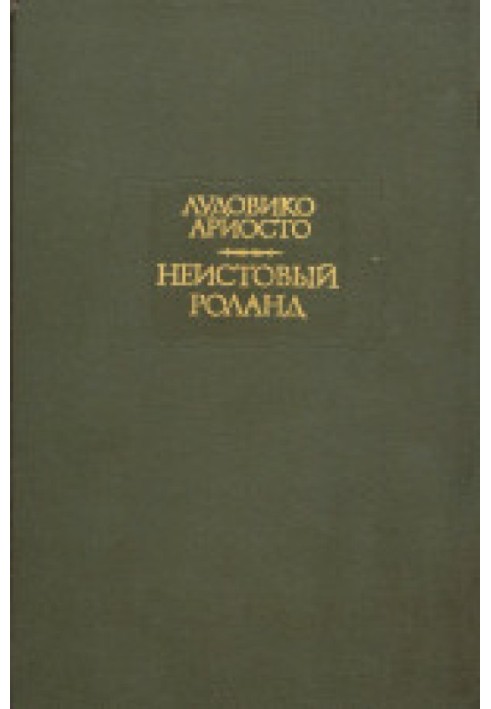Furious Roland. Cantos I–XXV
 Instant download
Instant download
after payment (24/7)
 Wide range of formats
Wide range of formats
(for all gadgets)
 Full book
Full book
(including for Apple and Android)
“Furious Roland” or “Furious Orlando” (Italian: Orlando furioso) is a chivalric poem by the Italian writer Ludovico Ariosto, which had a significant influence on the development of European literature of the New Age. The earliest version (in 40 songs) appeared in 1516, the 2nd edition (1521) differs only in more careful stylistic finishing, completely published in 1532. “Furious Roland” is a continuation (gionta) of the poem “Roland in Love” (Orlando innamorato) , written by Matteo Boiardo (published posthumously in 1495). Consists of 46 songs written in octaves; the full text of “The Furious Roland” has 38,736 lines, making it one of the longest poems in European literature. The work is based on traditions from the Carolingian and Arthurian cycles, transferred to Italy from France in the 14th century. Like Boiardo, only the names of the characters remained from the Carolingian epic songs, and the entire plot was taken from the Breton knightly romance. The plot of "Furious Roland" is extremely confusing and breaks up into many separate episodes. Nevertheless, the entire content of the poem can be reduced to fourteen storylines, of which eight are large (Angelica, Bradamanta, Marfisa, Astolfo, Orlando, Rinaldo, Rodomont, Ruggiero) and six small (Isabella, Olympia, Griffin, Zerbino, Mandricardo, Medoro) . And there are thirteen more inserted novellas. The main plot lines of the poem are the unrequited love of the strongest Christian knight Roland for the Cathayan princess Angelica, which leads him to madness, and the happy love of the Saracen warrior Ruggiera and the Christian warrior Bradamanta, who, according to the poem, are to become the founders of the Ferrara ducal dynasty d'Este.
Data sheet
- Name of the Author
- Лудовико Ариосто
- Language
- Russian
- Translator
- Михаил Леонович Гаспаров













